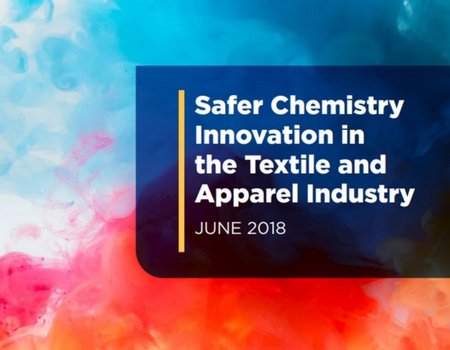
To create the tipping point, pioneering sustainable practices must be connected with the mainstream.
The clothing and textile industry will go through a period of transformation over the next decade, during which it will develop new materials and eliminate the chemicals that are both having a detrimental effect on the worlds eco-system. Thats the view of a new report commissioned by an organisation that campaigns for more sustainable working practices from textile and apparel producers, Fashion for Good, which has developed a five-point list of the innovations that could bring about that change.
Titled Safer Chemistry Innovation in the Textile and Apparel Industry, the 60-page report has been put together by Safer Made, the venture capital fund set up to reduce human exposure to damaging chemicals, which is using the document to accelerate the adoption of new technologies that can reduce that risk.
 Speaking to Bio-Based World News about the report, Eva van der Brugge, innovation manager atFashion for Good, said that the fashion industry can change if the promising innovations like those highlighted in the report are brought to scale. To create the tipping point, pioneering sustainable practices must be connected with the mainstream. This can be successful if we collaborate in a pre-competitive space, said van der Brugge.
Speaking to Bio-Based World News about the report, Eva van der Brugge, innovation manager atFashion for Good, said that the fashion industry can change if the promising innovations like those highlighted in the report are brought to scale. To create the tipping point, pioneering sustainable practices must be connected with the mainstream. This can be successful if we collaborate in a pre-competitive space, said van der Brugge.
Within its first year, Fashion for Goods programmes have supported over 40 start-ups with technologies ranging from innovative materials and processes to new circular business models. With an open invitation to the entire apparel industry, Fashion for Good convenes brands, producers, retailers, suppliers, non-profit organisations, innovators and funders united in this shared ambition.
The successful elimination of hazardous chemicals, the report states, will depend on positive action from a wide range of operators in the supply chain from both within and outside the industry. Key among them, and which can lead the way in safer chemistry innovations, are brands, retailers, chemical suppliers and the mills that create the fabrics. The report’s five innovation approaches that its hoped will bring forth change are:
1. the development of new materials, such as alternatives to leather
2. new safer chemistries, including bio-based dyes
3. waterless processing, to cut down on instances like jean manufacture which uses a reported 10,000 litres to make one pair
4.the effective recycling of fibres from nylons and polyester
5. improved supply chain information that can trace materials used in clothing production.
The impact of the fashion industry was brought into sharp focus last year, when a report created by the Ellen MacArthur Foundation and supported by the designer Stella McCartney revealed that waste was such an issue in the industry that the equivalent of 50 billion plastic bottles were being released into the ocean every year. Contributing to this incredible statistic are the man-made fibres that are released in their millions from from materials like polyester with every wash the problem is so widespread that particles are commonly found in the animal food chain.

The Safer Chemistry report from @FashionforGood and Safer Made gives a detailed breakdown of the most problematic chemicals and fibres, including: heavy metals, used in dyes and as catalysts in resins and synthetic fibres; dyes and residuals, some of which are harmful and designed to bind fibres that can react with biological tissues; and solvents, widely used to transfer chemistry onto fabric and remove residuals and also causing ill health to the workers coming into contact with them.
The report puts much of the blame for the unsustainable nature of the textile industry down to the rate of change, with chemicals developed so quickly that insufficient thought has been put into the impact theyll have on the environment. This is at odds with the situation before the Industrial Revolution, when naturally occurring materials were used that had no such negative impacts, with wood, clay, sand, stone and iron ore among the most commonly used that merely returned to the earth from where they were extracted.
You may also be interested in this
Read: The hidden environmental cost of Christmas jumpers.
Read: Bio-leather made from apples one of the 15 start-ups aiming to change fashion.
Read: 20 Expert Insights from Day One of World Bio Markets.
Download: The Bio-Based World Quarterly #9.
Read: H&M diverts nylon waste from landfills and oceans with its latest collection.





